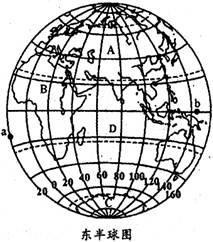People say time is relative.But relative to what.I do know that sometimes time“seems”to be moving slower.Remember Christmas Eve when you were a child? It was the longest night of the year.It lasted forever! And now it seems like I just paid my bill yesterday...and it’s due again!
People tell me all too frequently…I need more time! Oh ,really?…Mother Teresa,Michelangelo,and Helen Keller all had 24 hours a day.Look what they did with their time!
Is it that we need to manage our time better…or our priorities(重点)?You’ve heard the expression“first things first.”The first step in understanding the power of time is to understand that it is limited.Why is it then that some people get a lot more done? We know the answer.They use their time smartly.
One day an expert on time management was speaking to a group of students and announced a quiz.He pulled out a wide-mouthed jar.Next,he placed about a dozen fist-sized rocks,one at a time , into the jat, until no more would fit.“Is it full?” he asked.”Yes,”responds the class.”Oh really?” he asked.So he took out a bucket of gravel(砂砾), which he managed to work down into the spaces between the larger rocks.“Is it full now?” he asked.
Wising up,one answered,‘'Probably not.”Sure enough, he took out a bucket of sand,which he poured into the empty spaces.”Is it full now?” he asked.”No,” reply the students confidently.So he took a glass of water and filled it in.Then he asked,“What is my point?’’
One said,‘'No matter how full your schedule is,if you try really hard,you can always fit some more things into it!”
“No,”the speaker replied,“It tells us if you don’t put the big rocks in first, you’ll never get them in at all.’’
What are the big rocks? The things you should put in to your jar first.
The rich don’t get 25 hours and the poor don’t get 23…we all get the same.Let’s use them wisely! Invest your time wisely!
49.What does the point of the quiz lie in_______.
A.How to put more things into ajar. B.How well the students learn the lesson.
C.How to get more done in limited time D.The skill and order is very important.
50. “The big rocks”in this passage refers to_______?
A.difficult points. B.advantages C.minor things D.focuses
51. How is the passage mainly developed?
A.By inferring. B.By comparing.
C.By listing examples. D.By giving facts.
52. The text is written mainly
A.to explain the origin of the expression “first things first”
B.to call on us to use our time in a smart manner
C.to introduce a meaningful class given by an expert
D.to tell us about the relativity and the power of time

